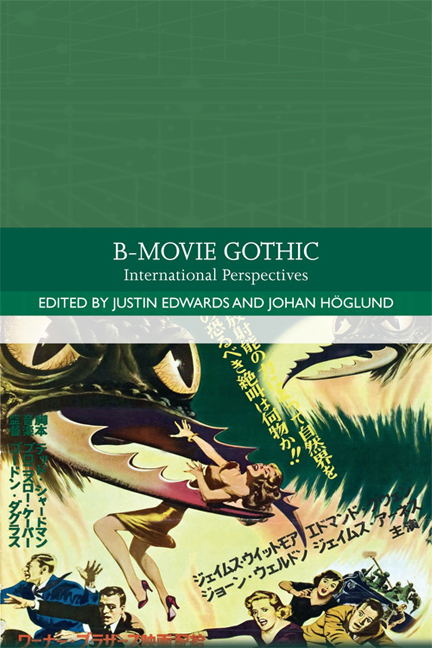7 - Austro-trash, Class and the Urban Environment: The Politics of Das Ding aus der Mur and its Prequel
Published online by Cambridge University Press: 06 May 2021
Summary
Produced on a combined budget of less than 2,000 Euro, Das Ding aus der Mur (‘The Thing from the River Mur’; 2012) and its prequel, Das Ding aus der Mur: Zero (2015), were obviously not made with a mass market in mind. Indeed, after a brief stint in select Austrian theatres and screenings at some small Austrian film festivals, Das Ding was uploaded to YouTube, where it has amassed fewer than 12,000 views in the four years between its uploading in March 2013 and the time of writing of this chapter. Like its predecessor, Zero was screened in a few theatres and at a couple of small festivals before it was released on DVD, in which format it is directly available from the films’ producer and director, David Hehn.
Narratively, the films are highly fragmented, extraordinarily trite and extremely cliched. The two movies tell the story of Police Chief Alois Ratzinger and his fight against a monster which slays human beings in the vicinity of the river Mur in the Austrian city of Graz. The titular creature is an unnatural hybrid whose DNA combines the genetic information of various species, including humans, while Ratzinger is an alcoholic, indifferent policeman constantly tired of work (not only his work, but work in general). Still, he somehow not only ends up battling the monster, but in fact succeeds in defeating the creature in hand-to-hand combat towards the end of Das Ding. Zero makes it clear that Ratzinger had, in fact, defeated the creature (or, rather, its ancestors) previously.
However, the story provides little more than the pretext for scenes of violence. In this respect, the movies do not particularly diverge from standard horror fare, since, as Stephen Prince has noted, in horror movies ‘narrative structure per se is less significant than the creation in viewers of states of fright, anxiety, even disgust’ (2004, 8). Typically, these emotions are projected onto and/or triggered by the monster, which ‘threatens normality’ (Wood 2003, 72) and points at ‘an array of societal, political and sexual threats’ (Halberstam 1995, 23). Monsters, in short, are political. However, ‘within the Gothic’, David Punter has argued, ‘we can [only] find a … displaced … engagement with political … problems’ (1980, 62).
- Type
- Chapter
- Information
- B-Movie GothicInternational Perspectives, pp. 108 - 121Publisher: Edinburgh University PressPrint publication year: 2018



